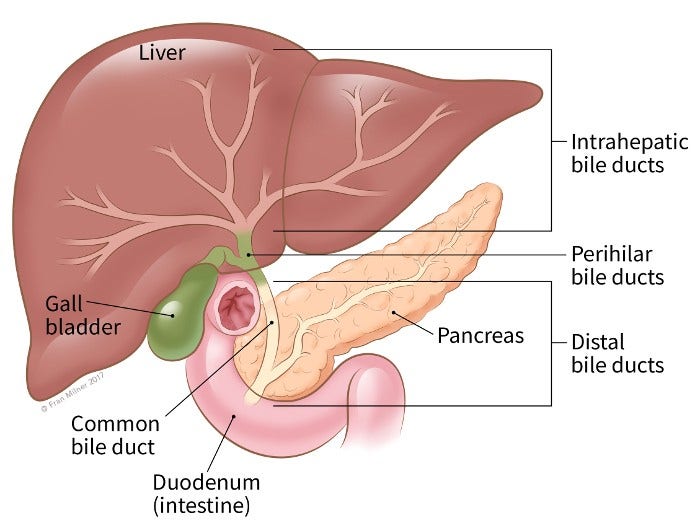Your gift is 100% tax deductible
Bile Duct Cancer Stages
The stage of a cancer describes how much cancer is in the body. It helps determine how serious the cancer is and how best to treat it. Doctors also use a cancer's stage when talking about survival statistics.
The stage of a bile duct cancer is determined by the results of the physical exam, imaging and other tests, and by the results of surgery if it has been done.
The American Joint Committee on Cancer (AJCC) TNM system
A staging system is a standard way for the cancer care team to sum up the extent of a cancer. The main system used to describe the stages of bile duct cancer is the American Joint Committee on Cancer (AJCC) TNM system. There are three different staging systems for bile duct cancers, depending on where the cancer started:
- Intrahepatic bile duct cancers (those starting within the liver)
- Perihilar (hilar) bile duct cancers (those starting in the hilum, the area just outside the liver)
- Distal bile duct cancers (those starting farther down the bile duct system)

Nearly all bile duct cancers start in the innermost layer of the wall of the bile duct, called the mucosa. Over time, they can grow through the wall toward the outside of the bile duct. If a tumor grows through the bile duct wall, it can invade (grow into) nearby blood vessels, organs, and other structures. It might also grow into nearby lymphatic or blood vessels. From there, it might spread to nearby lymph nodes or to other parts of the body.
Resectable versus unresectable
The TNM staging system gives a detailed summary of how far the bile duct cancer has spread. It also gives doctors an idea about a person’s prognosis (outlook).
For treatment purposes, doctors often use a simpler system based on whether or not they think the cancer can be removed (resected) with surgery:
- Resectable cancers are cancers that doctors believe can be removed completely by surgery.
- Unresectable cancers have spread too far or are in too difficult a place to be removed entirely by surgery.
In general terms, most stage 0, I, and II cancers and possibly some stage III cancers are resectable. Most stage III and IV tumors are unresectable. However, resectability depends on other factors too, including the size and location of the cancer and whether a person is healthy enough for surgery.
More information
For more detailed staging information based on the type of bile duct cancer, choose an option below.
- Written by
- References

Developed by the American Cancer Society medical and editorial content team with medical review and contribution by the American Society of Clinical Oncology (ASCO).
American Joint Committee on Cancer. AJCC Cancer Staging Manual. 8th ed. New York, NY: Springer; 2017.
Last Revised: October 11, 2024
American Cancer Society medical information is copyrighted material. For reprint requests, please see our Content Usage Policy.
American Cancer Society Emails
Sign up to stay up-to-date with news, valuable information, and ways to get involved with the American Cancer Society.



